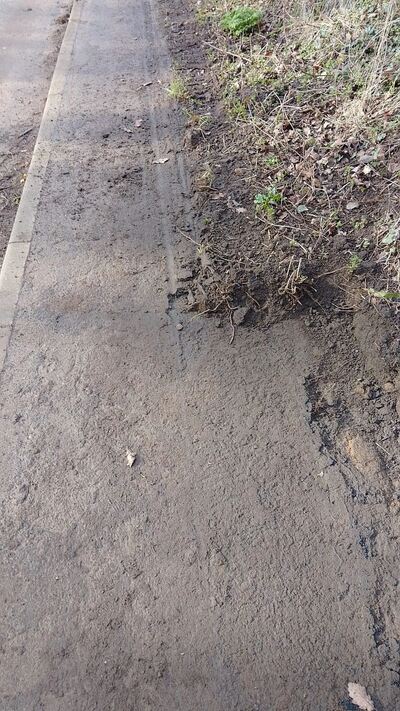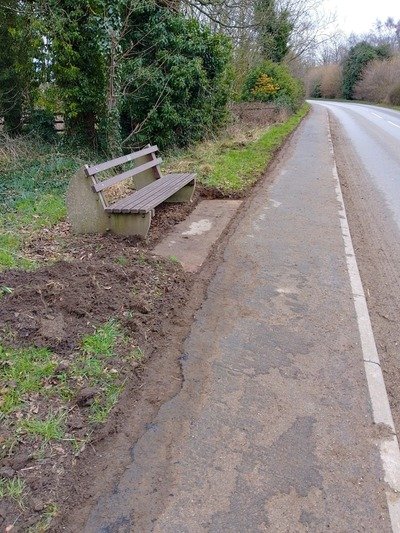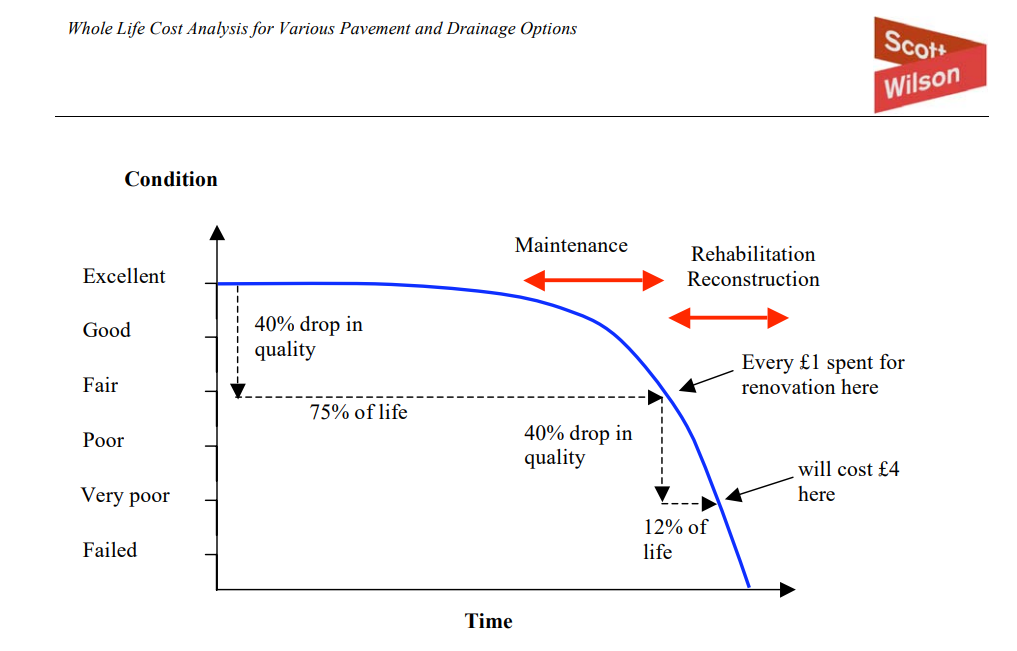3 Reasons why Brushing is Better than Spraying
For many years now, spraying has been the go-to method for managing weeds on footpaths? But is this method fit for purpose?
Is spraying weedkiller a good solution for pavement maintenance?
Many councils employ contractors to spray the weeds on their footpaths and pavements.
In some ways I see the logic leading to this decision... If residents complain about the weeds on the pavements, then I guess that they are concerned with the weeds. Chemical is a cheap way to kill weeds at scale, so contractors who are bidding for work will use it to kill the weeds for the lowest price possible in order to win the work.
Job done right?
But is it the council's job to kill the weeds? Or is the job specification actually a bit broader than that?
It strikes me as obvious that weeds aren't the only issue to solve on pavements.
We also want to;
- provide good access to the pavement or footpath for pedestrians,
- prevent flooding and water related issues.
- prevent the pavement from being damaged.
Spraying doesn't deal with any of these problems, so it may be a cheap weedkilling solution, but it isn't a cheap pavement maintenance solution.
I'll go on to explain why.
The main thing that causes the above problems on pavements and footpaths (or in fact on any hard surface) - is soil build up.
Not only will spraying weeds fail to deal with soil build up, it actually adds to the problem, as the dead weeds will decompose and become additional soil.
The effects over time of only spraying the pavement with weedkiller
If we only spray a pavement, the soil will keep accumulating. If we wait several years before doing anything about this problem, then several things happen, which can be seen in the photo below.

In the picture, the soil build up has been partially cleared back so you can see the extent of the problems.
The first is obvious;
The soil is obstructing pedestrian access to more than half the pavement.
It has clearly been sprayed, because the soil is fairly bare except for the odd bit of grass or dandelion, which is particularly agressive.
The lack of other maintenance over the last few years has led to a massive amount of soil build up. There is no way this pavement would allow pedestrians to pass eachother safely whilst keeping both pedestrians shoes clean, let alone a wheelchair.
The second issue is not so easily seen because the soil has covered it up;
The water cannot run off the pavement and down the drain,
On a new or well maintained pavement, water is able to run down either side of the pavement where it is channelled into a drain, usually located on the road surface. On a path that has only been sprayed, the soil retains water, so when the pavement is covered in soil it is not able to run down the channel normally. This leads to water sitting in any lower areas causing puddles of standing water. The soil will also block up the drains, preventing it from being channelled away from the surface, resulting in flooding.
I don't know if you have seen any news stories about roads flooding recently? Perhaps this might have something to do with it.
The soil is resulting in a damaged pavement
Thirdly, as the water is being retained by the soil on top of the pavement it will sit there in the surface, especially in any lower points such as cracks. In winter, this water is likey to freeze. When water freezes it expands, exerting a lot of force on the pavement surface, especially in the cracks that the water has found it's way into - expanding the cracks and weakening the pavement surface. This results in a lot of damage which is revealed when the soil is finally removed from the pavement.
The best way to avoid this is to keep the surface clean, so that the water can run off properly down the drains and the surface can dry out more rapidly.
You can see the damage caused by freeze thaw on the edge of the negelcted surface in the image below;

In the image above we have revealed the original pavement width with a weedbrush and shown the extent of the freeze-thaw damage on the edge of the pavement. As you can see, it is quite extensive, but I have also seen much worse damage. Ideally this surface would be renewed to prevent trips on the now uneven surface.
Let's add up the costs of only using Chemical weedkiller and neglecting to sweep the pavement
For some groups in our society – particularly older people and disabled people – the quality of our pavements can act as a major deterrent to walking. Living Streets research has found that nearly one in three (31%) older adults (aged 65+) are prevented from walking more or at all on their local streets because of cracked and uneven pavements; 48% of older adults say they would walk more if pavements were better maintained.
- Low quality pavements have a real cost – particularly in terms of the burden on the National Health Service due to trips and falls. It is approximated that the national average number of ‘trip hazards’ for every 100 metres of footway is currently at 4.1 (The House of Commons Transport Committee, 2003b). This is an unacceptable hazard to the general public and it should be possible to deliver safety improvements through effective maintenance policy, systems and procedures. It has been estimated that 10% of people over 65 will experience a pedestrian fall outdoors each year. There are over 10 million people over the age of 65 in England, and annually there could be more than one million outdoor falls among older adults. A maximum cost of emergency admissions for pedestrian falls in the UK (mostly England) in 2019 was calculated at £98.7 million. A potential fourfold increase in the cost of hospital, community and social care services after admission brings the bill to an additional £394.8 million
- According to research by the Pesticide Action Network - When used on hard surfaces such as pavements and paths pesticides tend to run off, contaminating water courses and harming aquatic wildlife in the process. They also find their way into our drinking water. It is estimated that water companies spend in excess of £30 million per year removing pesticides from water, the cost of which is passed on to us via our water bills.
- It costs a lot of money to clear sewers that have been blocked and to try and keep other drainage pipes clear from blockages. It costs Thames Water alone over £10 million a year to send teams out to deal with sewer problems caused solely by blockages (The Guardian). A proportion of this can be attributed directly to soil and other detritus that is not removed from the pavements. A lot of this flooding is caused by sewer blockages and there are over 200,000 reported blockages in the UK every year (Water UK). This does not even start to cover the cost of the damages to property caused by this flooding.
- The importance of timely maintenance and reconstruction to protect against ‘expensive’ work being required at a slightly later point in time was highlighted by Shahin et al (1990), if maintenance is left for an extra 12% of a pavement’s life, a 40% drop in road condition occurs, resulting in a factor of four increase in maintenance costs. Hence it is important to undertake maintenance works before the occurrence of serious structural damage.

I can't find a total cost for this footway and pavement repairs anywhere, but hopefully you can see from the information above that we are talking in the hundreds of £Millions per year, if not £Billions per year that neglecting to remove soil from our pavements is costing us indirectly. If these costs are accounted for, then surely it makes sense to spend money to remove the soil, therefore removing the majority of weeds at the same time, rather than simply spraying weeds.
Kersten offer a range of pedestrian and tractor mounted sweepers and weedbrushes to make this job relatively quick and easy. Whether you are removing years of soil build up, or simply maintaining a clean pavement.

Get in touch to arrange a demonstration.
No comments yet. Login to start a new discussion Start a new discussion